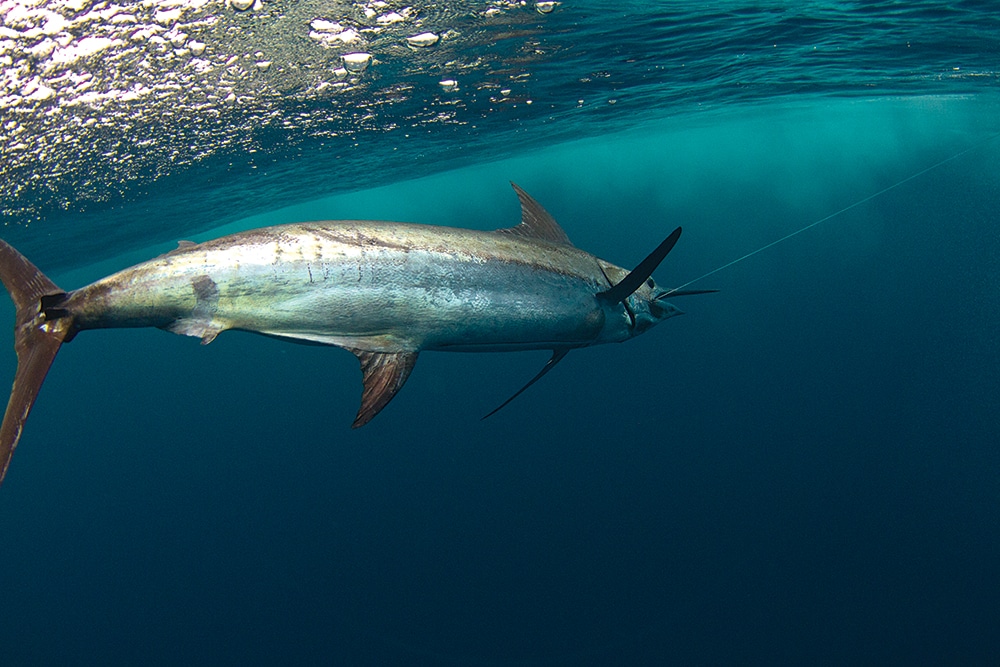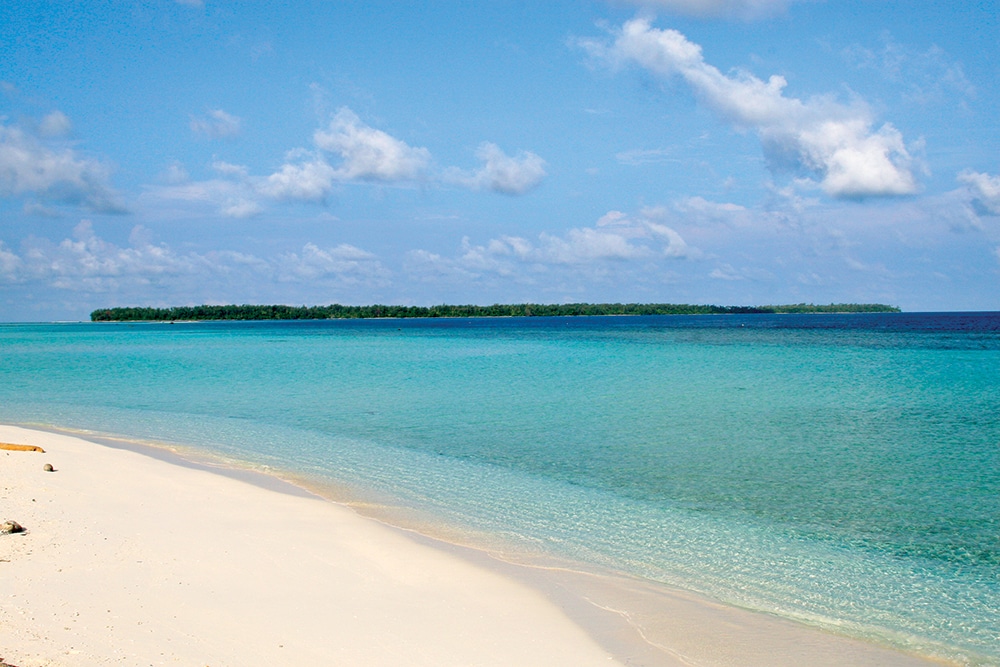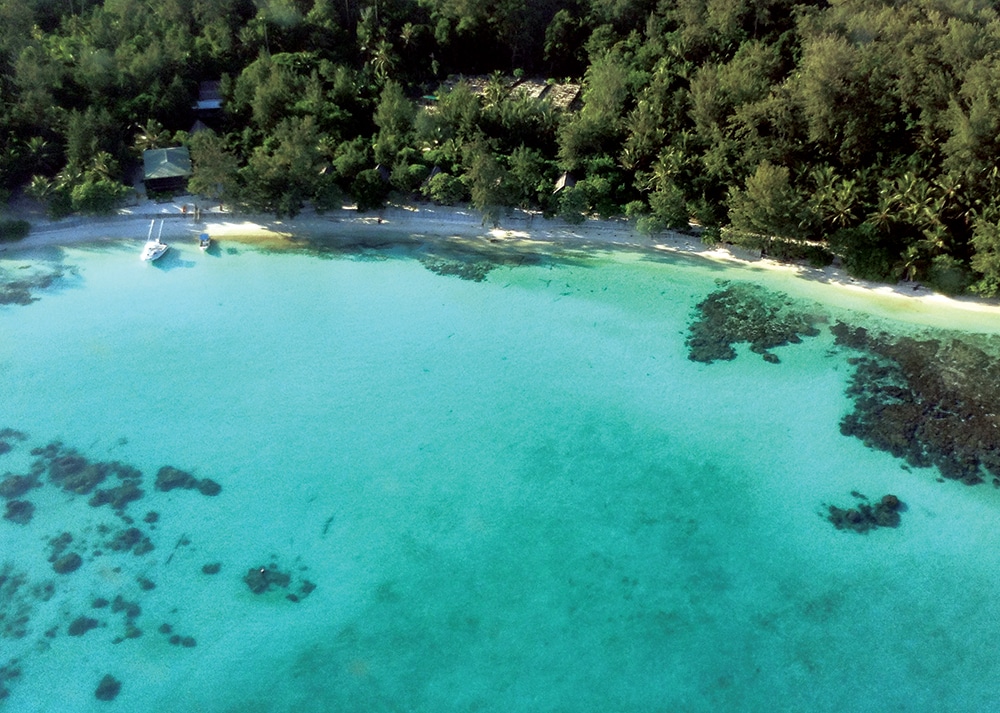
Welcome to the Conflict Islands
Welcome to the Conflict Islands
Of all the wild outposts and situations we’ve encountered over nearly 20 years in the tropical Pacific, we found the circumstances surrounding fishing at Panasesa Resort in the Conflicts to be entirely unique. Panasesa is just one of many spectacular islets ringing the approximately 12-by-5-mile oval lagoon, the exposed rim of an undersea mountain towering from the sea floor. This atoll comprises the Conflict Islands. Located near the epicenter of coral reef evolution, few places in the world boast higher marine diversity. It may also be the only wholly privately owned atoll on the planet, having been purchased in 2003 by Ian Gowrie-Smith, a colorful, Australian-born entrepreneur now based in London and Sydney. And it was Ian who was behind this entire caper.

Giant Feeding Station
Nomad Sportfishing, an Australian-based charter, targets everything from giant black marlin to reef fish. Of course, they use standard offshore gear for targeting big billfish. Additionally, they cater to an international specialist clientele using high-tech spinning tackle — for example, Shimano Stellas loaded with 130-pound braid matched to custom power rods designed to cast huge poppers, stick baits and metal jigs down deep. They’ll troll using the same outfits to land mostly more average-size blacks, blues, sails and stripes. Most of the time, the drags are cranked down to 38 pounds for wresting huge giant trevally, dogtooth tuna, yellowfin tuna, wahoo, mahimahi, billfish, and anything else that swims up to eat. This is how we were rigged for our expedition.
The departing charter group had sought giant trevally and dogtooth. However, during brief interludes of casting to schools of busting yellowfins, two black marlin swam right up to the boat to investigate. At another juncture, they caught two sailfish spotted swimming along a drop-off. What explains all of this fish abundance? At 10° 46’ S, 151° 42’ E, the Conflict Islands lie at the western end of a vast region of equatorial upwelling, a nutrient engine driven by opposite-flowing, spiraling surface currents that suck deep water to the surface. At this latitude, east of Papua New Guinea, the westward-flowing South Equatorial Current splits. One fork swings to the southwest, becoming the East Australian Current. The balance continues eastward, swirling into the complex of islands that includes the Louisiade Archipelago. Like a stretch of boulders in a fast-flowing river, the large-scale ocean equivalent of rapids forms as this enormous mass of water forces its way through to the Torres Strait, the narrow gap between the northern tip of Australia and Papua New Guinea. The entire area experiences turbulent, eddying, nutrient-laden current flow, a giant feeding station for pelagic fish species.

Finding the Pockets
The icing on the cake is that this region lies within the sovereign political jurisdiction of Papua New Guinea. Foreign fishing fleets are not welcome, and they were not in evidence during our trip. Scientists estimate that the high-seas industrial fleets created in the wake of World War II, which are still growing, have reduced the standing crop of apex pelagic predators like marlin by at least 80 percent. Do isolated areas exist where blue marlin and other species spend time and flourish in something approaching their prior abundance? Yes. When we find pockets of, for example, blue marlin producing 10 to 15 strikes per day — like during July 2011 in Vava’u, Tonga and March/April 2007 off Moreton Island, Australia — this may approximate what was more widespread before the 1950s. The small amount of sport-fishing effort applied so far to this eastern region of Papua New Guinea and outlying islands indicates this area is loaded.

Things To Do
Snorkeling and swimming in the lagoon and nearshore waters of Panasesa and other islands is outstanding. The resort features a well-equipped scuba diving operation. Underwater, the scenery and diversity of sea life is spectacular. The resort also offers kayaking, sailing, hiking and nature walks, transport boats for out-island beach and nature exploration, picnics, and trips to neighboring island groups for cultural experiences and purchase of local carvings and wares. Non-fishing family members will be fully occupied and delighted.

Getting There
International flights from all over the world connect to the international airport at Papua New Guinea’s capital, Port Moresby. From there, at present, Panasesa Resort guests transfer to a charter plane that flies them directly to the airstrip on Panasesa Island in the Conflicts and arrives in time to catch same-day international flights on the way out. The quaint Panasesa Resort has beachfront bungalows spread out around a private lagoon. Each features a private veranda.

Climate, Conditions and Seasons
At 10 degrees south, the Conflict Islands lie in the equatorial tropics, just outside the cyclone or hurricane belt for this region. Early stage tropical convection weather and depressions can pass over the area and bring rainy, cloudy weather during the November to May storm season. Locals report that surface-feeding tuna schools are super abundant year-round, and during the winter months of July-August schools of yellowfin tuna averaging 100 to 130 pounds are common. All of the Indo-Pacific billfish species ranges encompass the area. Finer details of peak abundances await discovery by a dedicated game-fishing operation. Eastern Papua New Guinea waters in general are known to consistently produce blue marlin, big wahoo, yellowfin tuna, mahimahi and other species.

Resort Life
The units of Panasesa Resort are quaint, private lagoon beachfront bungalows with thatched roofs, tastefully constructed of native hardwood and delightfully appointed, fully screened and equipped with air conditioners. Breezes coming in off the lagoon will suffice for many. Each has a front veranda overlooking what can only be described as paradise. Very friendly and hospitable local staff service the bungalows daily and assist with preparing and serving meals in the main lodge. Internet access via satellite is superb. The location is far from developed civilization, so mostly all you hear is lagoon wavelets lapping the beach







